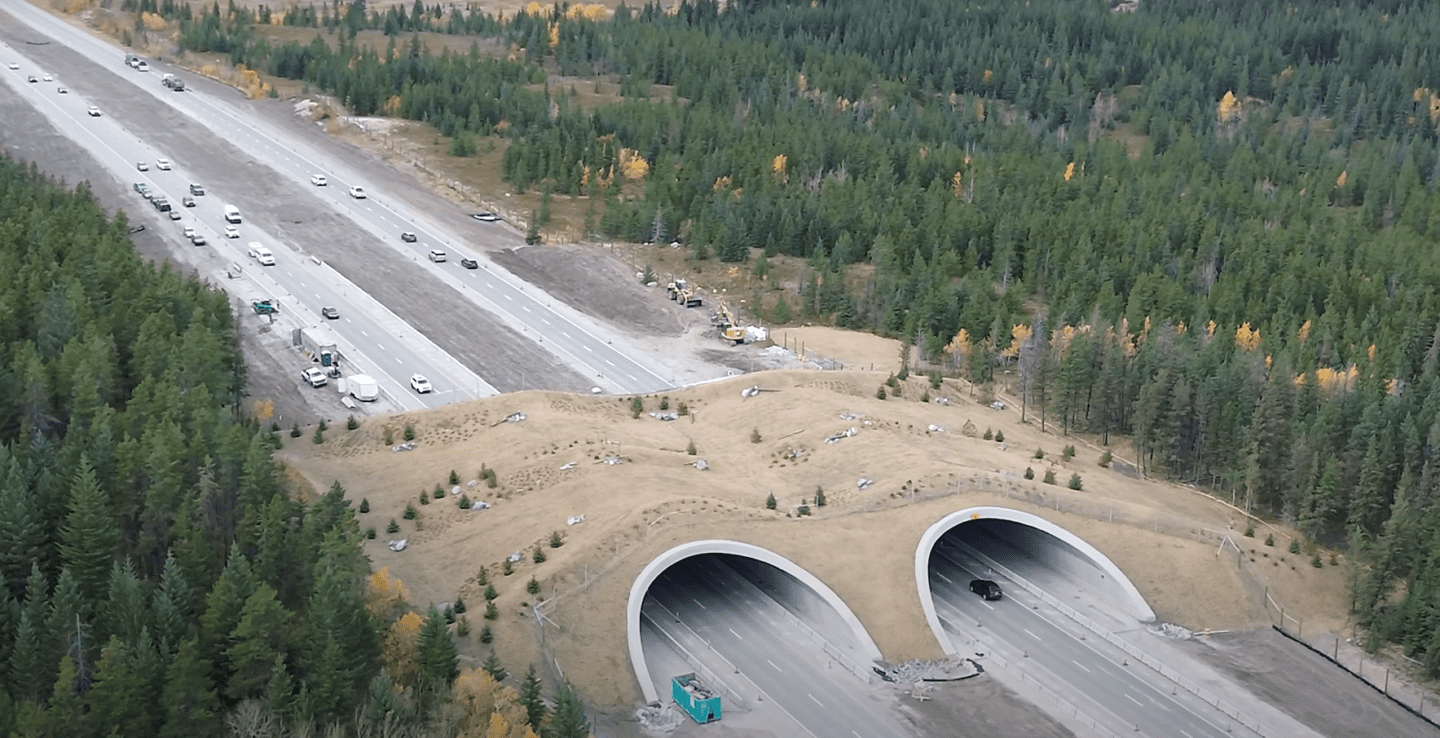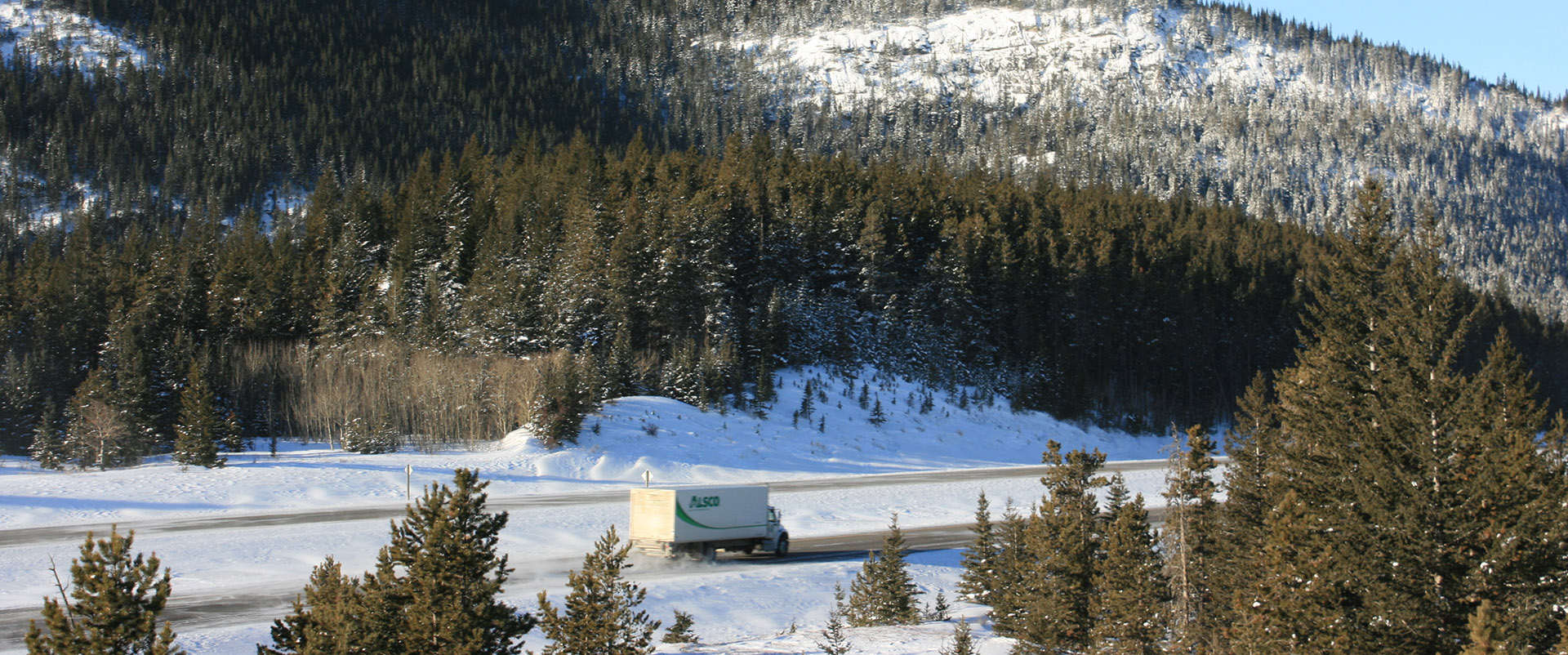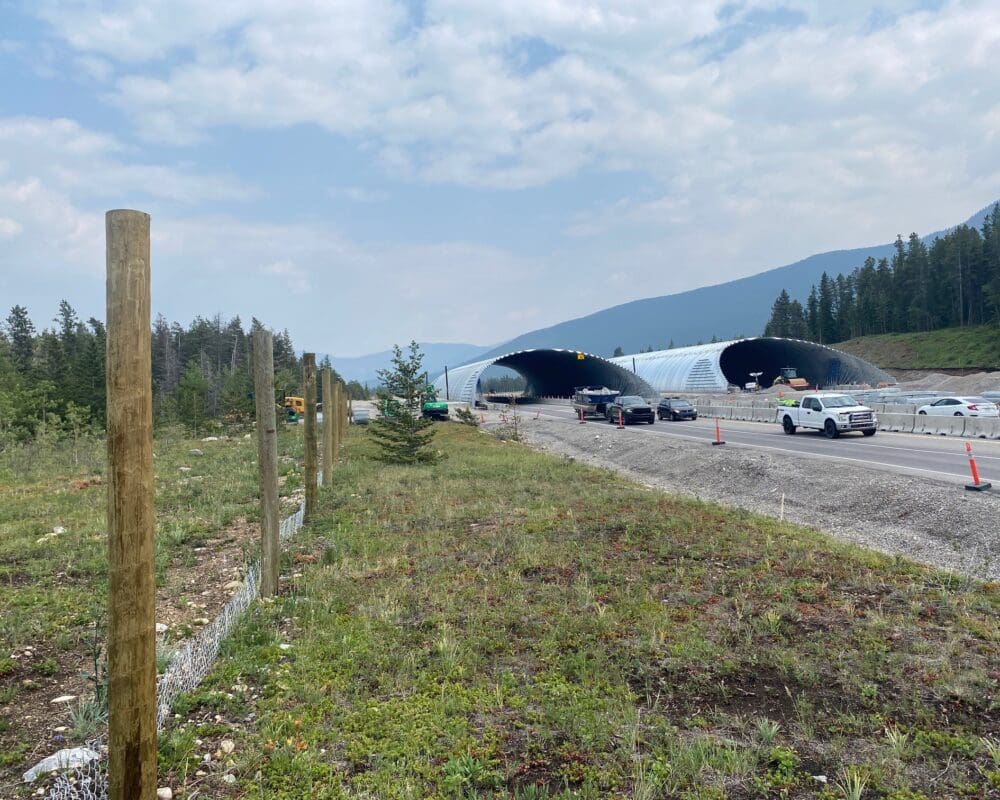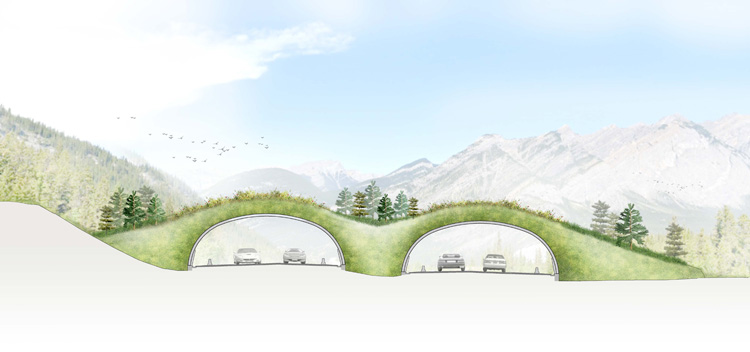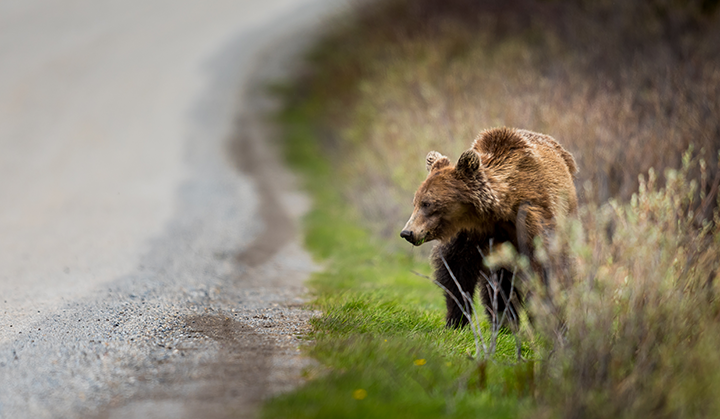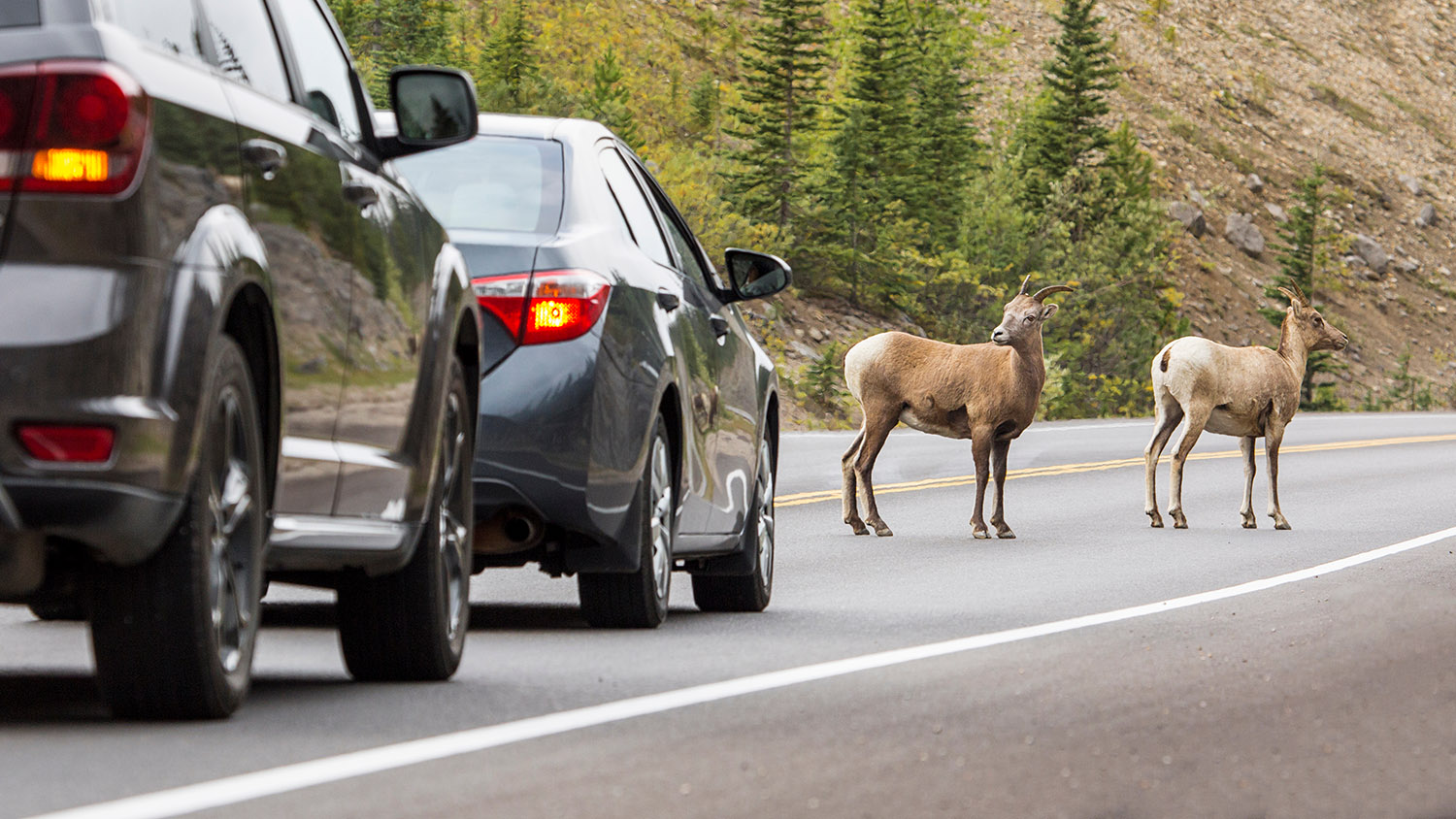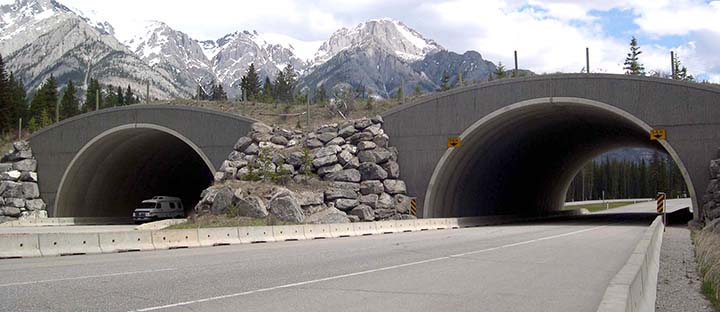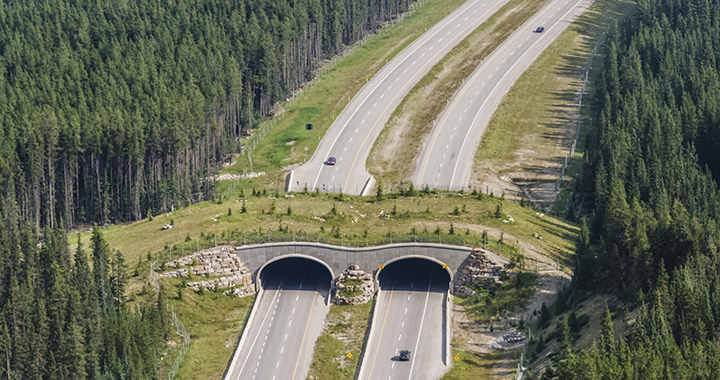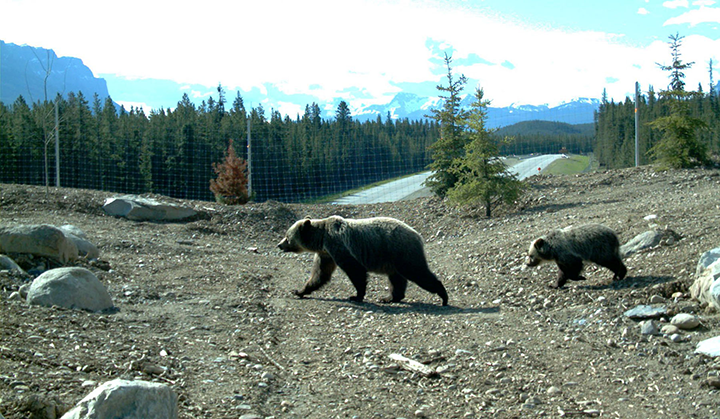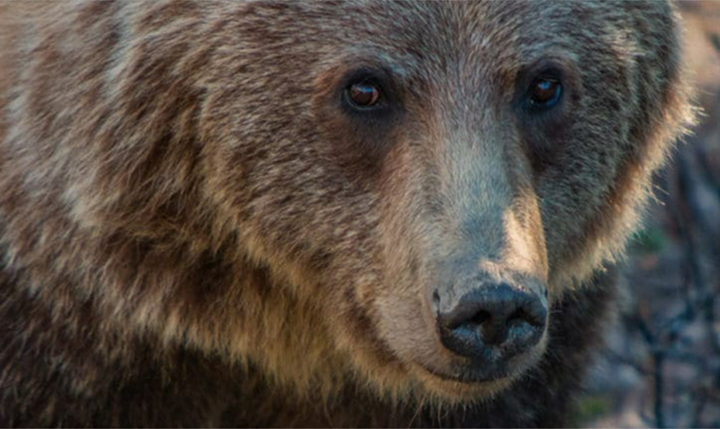Alberta’s first wildlife overpass outside of a national park has taken shape!
Nestled in the heart of Alberta’s beautiful Bow Valley, a groundbreaking initiative is taking shape with a promise to protect and preserve the region’s diverse wildlife.
The Peter Lougheed Wildlife Crossing (sometimes called the Bow Valley Gap wildlife overpass or Stoney Nakoda Exshaw wildlife arch) is a testament to Alberta’s commitment to wildlife conservation and ecological connectivity. Rising above the Trans-Canada Highway, this wildlife arch welcomes visitors to the Rocky Mountains and keeps animals off the road.
From research and knowledge gathering in the early 2000s to its use today by wildlife, this project is a vital link in ensuring the safety and freedom of movement for numerous species that call the Bow Valley home.
Why we need wildlife crossings and fencing
Highways are dangerous barriers for wildlife, often leading to fatal collisions with vehicles. These incidents put both animals and humans in danger, and disrupt the natural movement patterns of wildlife — essential for their survival and genetic diversity.
This is especially important in the Bow Valley, home to species such as grizzly bears, wolves, elk, and cougars. The Bow Valley is one of the most important regional wildlife corridors in Alberta and the broader Yellowstone to Yukon region.
The construction of this wildlife overpass aims to mitigate these dangers and restore connectivity between habitats divided by human infrastructure.
Construction progress through the seasons
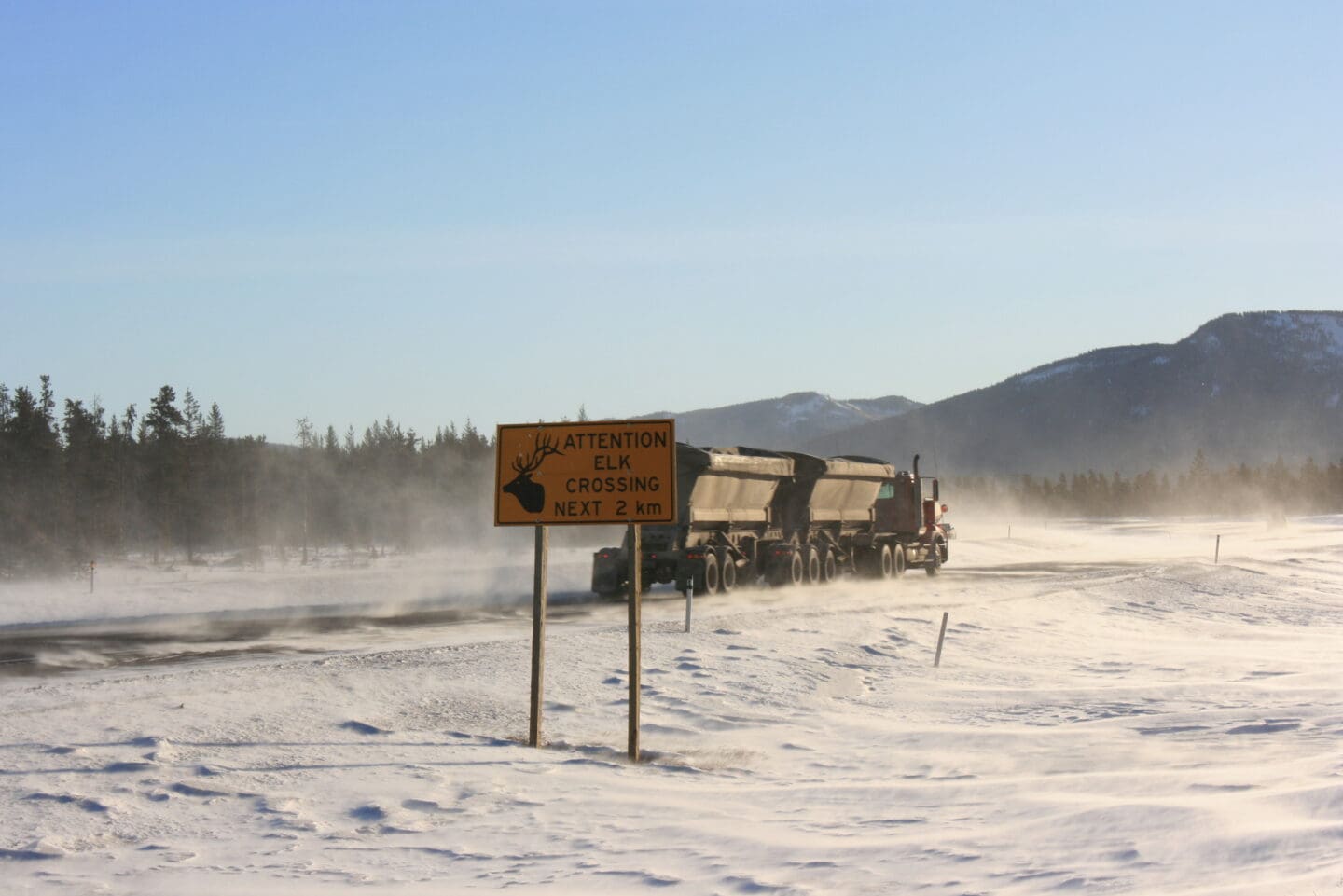
May 2018
Y2Y staff visit a high-collision spot on Highway 1 about five km east of Lac Des Arcs and 15 km from Canmore. An average of 22,000 vehicles a day travel the Trans-Canada Highway through the Bow Valley. In the summer, this number swells to 34,000 per day. That’s a vehicle once every 2.5 seconds.
For close to a decade, Y2Y has joined other community members advocating to the Alberta government for wildlife overpasses and fencing to help decrease wildlife-vehicle collisions in the Bow Valley east of Banff National Park. This particular spot is highlighted as a priority location.
November 2019
The Alberta Government announces it will fund a wildlife crossing at this spot, known as Bow Valley Gap.
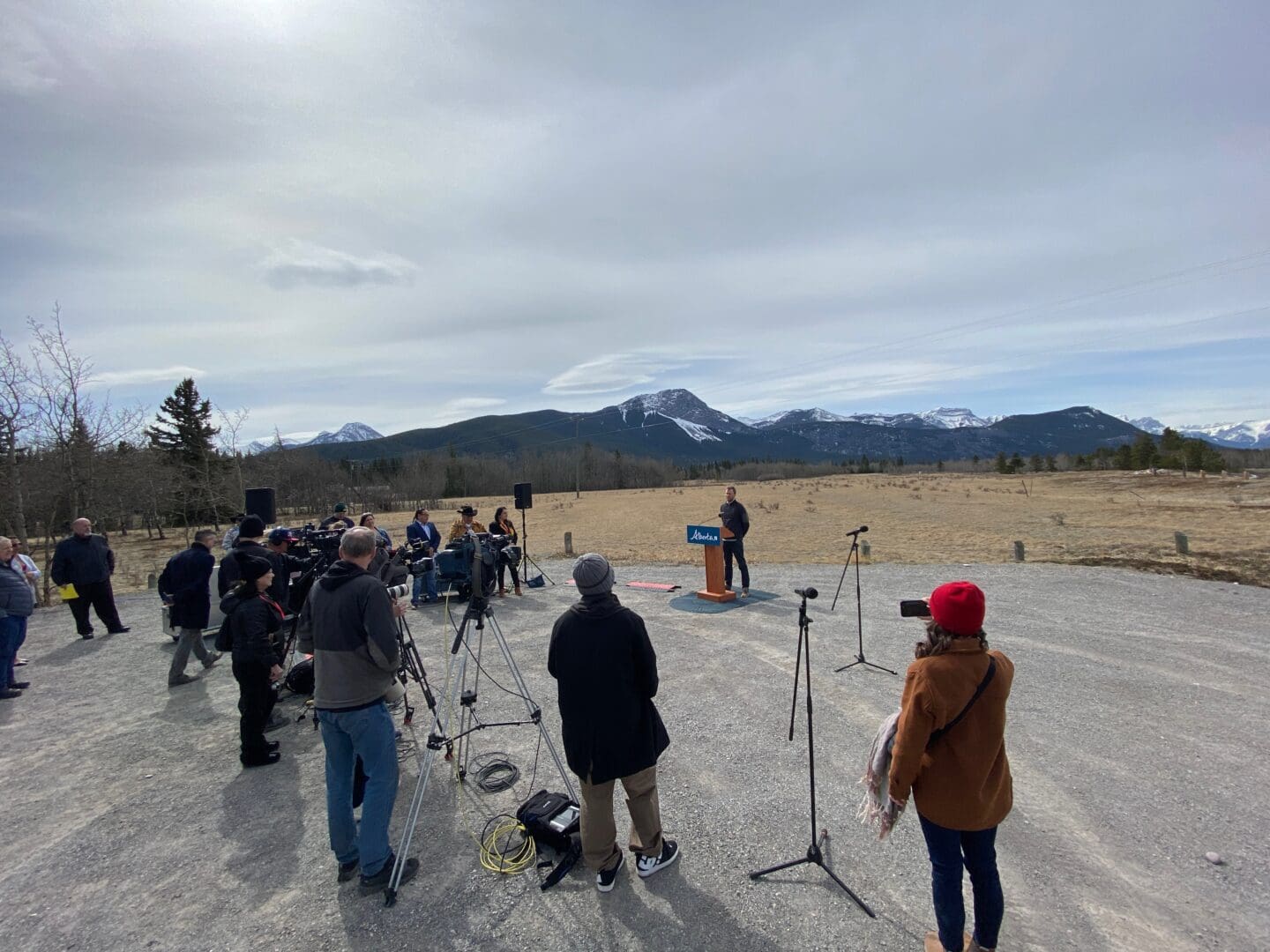
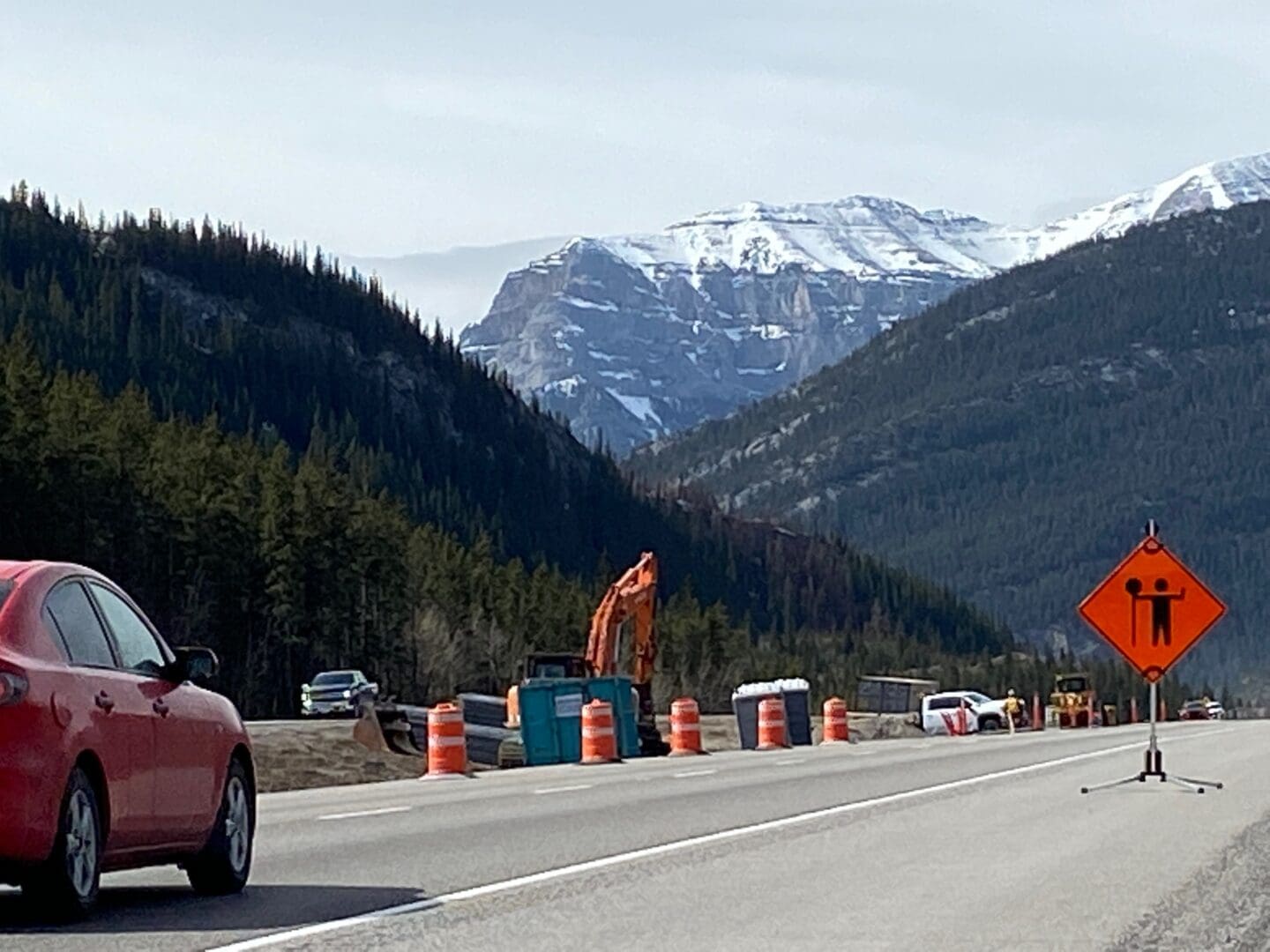
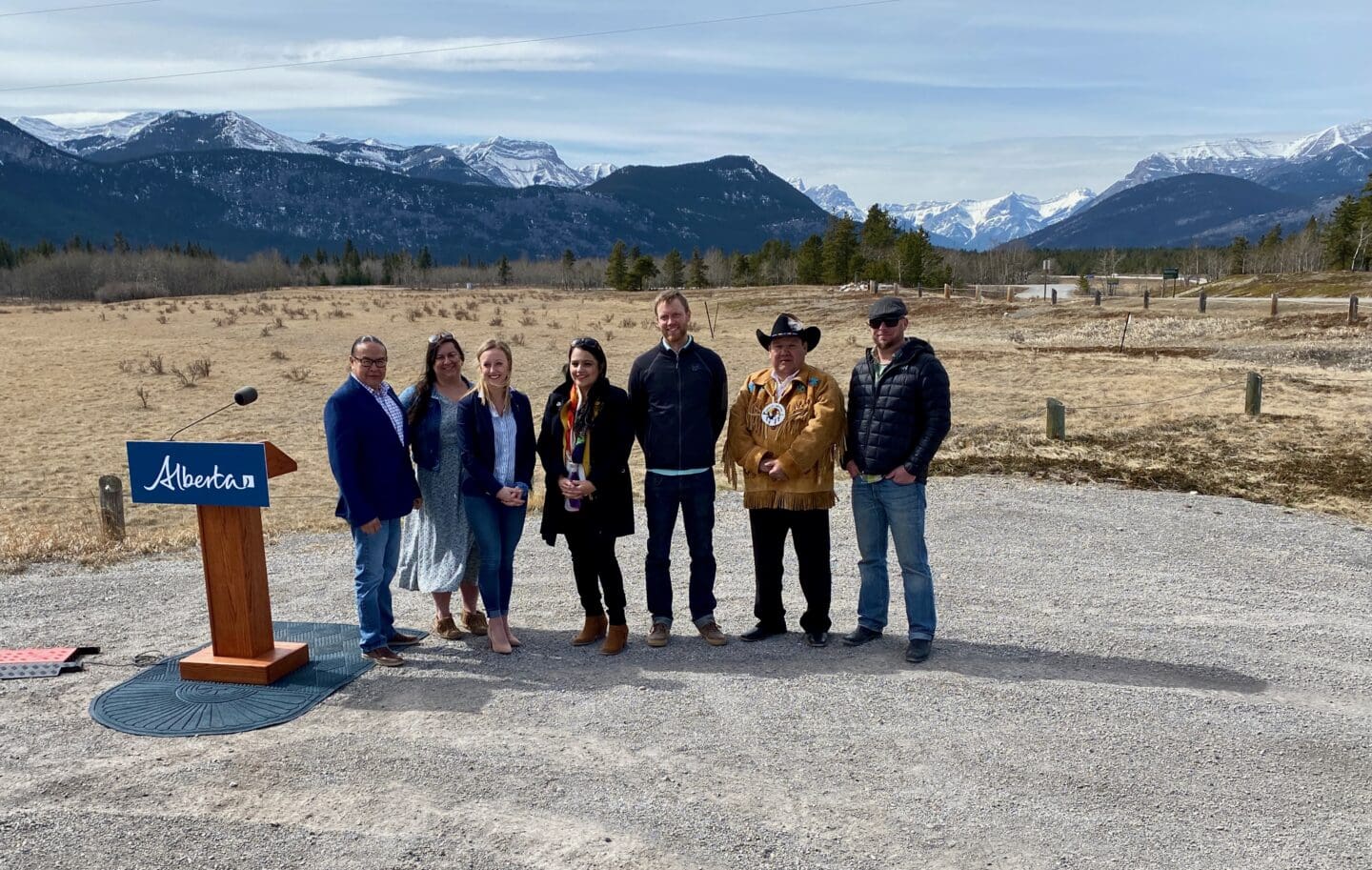
April 2022
After years of planning and budgeting, ground is broken and a press conference announce the start of construction.
This follows months of site preparation, including land surveys and environmental impact assessments, ensuring the construction process would be as minimally invasive as possible, with minimal impact to traffic.
The location chosen is ideal for an innovative, cost-effective and efficiently-built highway overpass and fencing. Protected lands span both sides of the highway with a landscape shape that would make construction cheaper. Wide-ranging species such as elk, wolves, and bears pass through this location often as they seek food and mates.
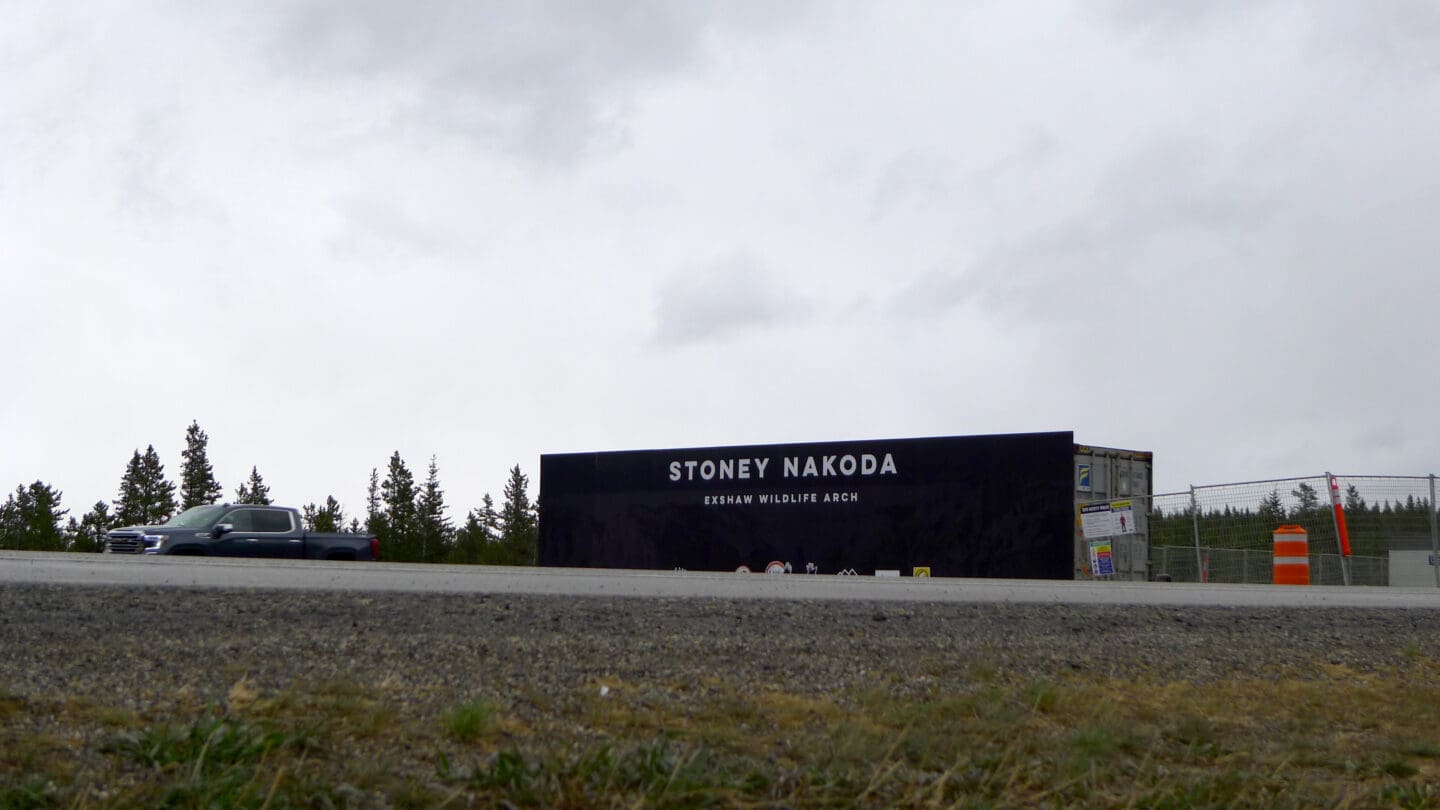
May 2022
The physical form for the overpass began to materialize soon after ground was broken in early 2022. Engineers, ecologists, and construction crews came together to lay the groundwork for this ambitious project.
Partners involved in the $17.5-million Alberta Transportation and Economic Corridors project include design consultancy firm Dialog, PME Inc. for general contracting and Atlantic Industries Ltd. for the steel arches.
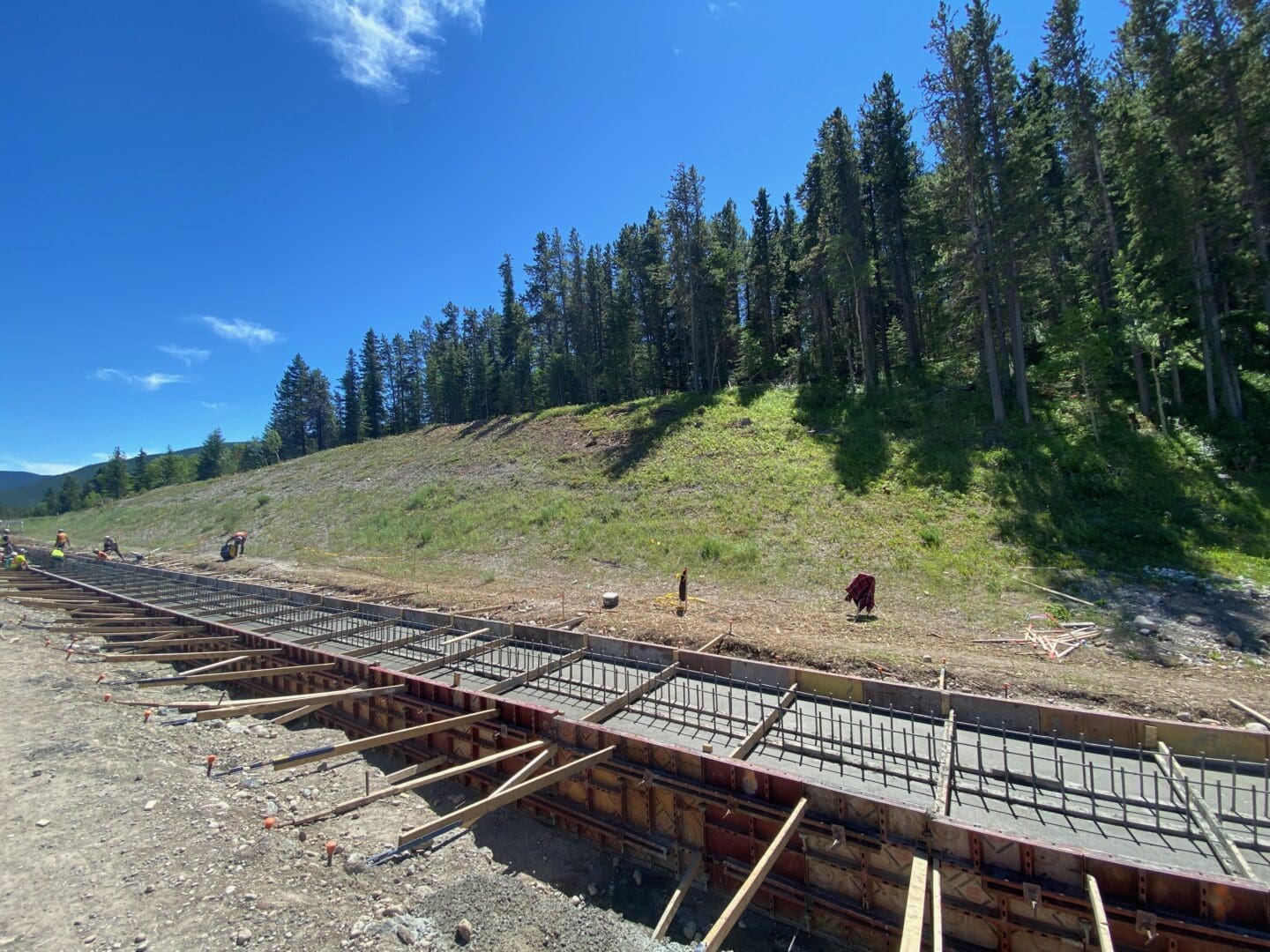
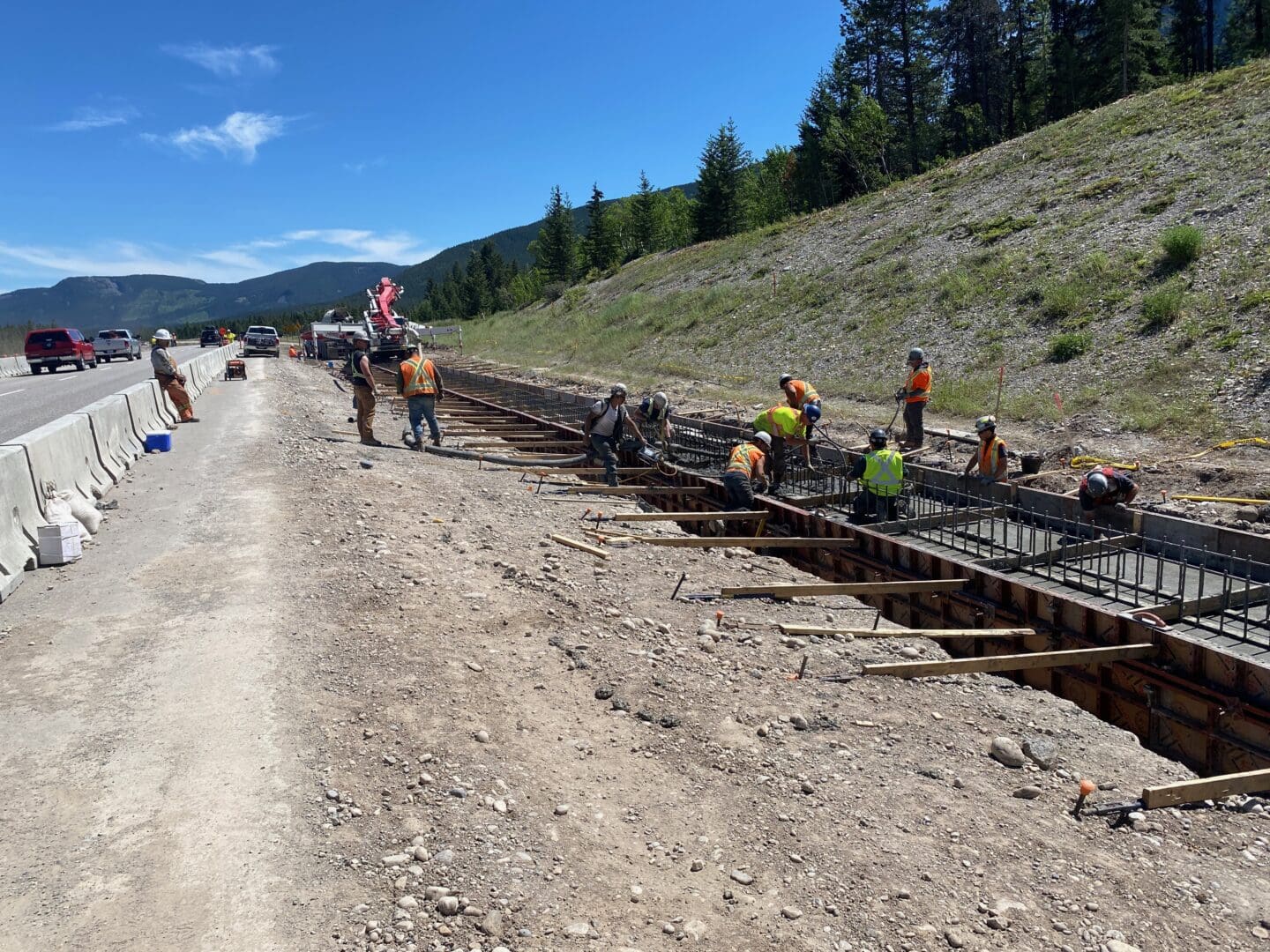
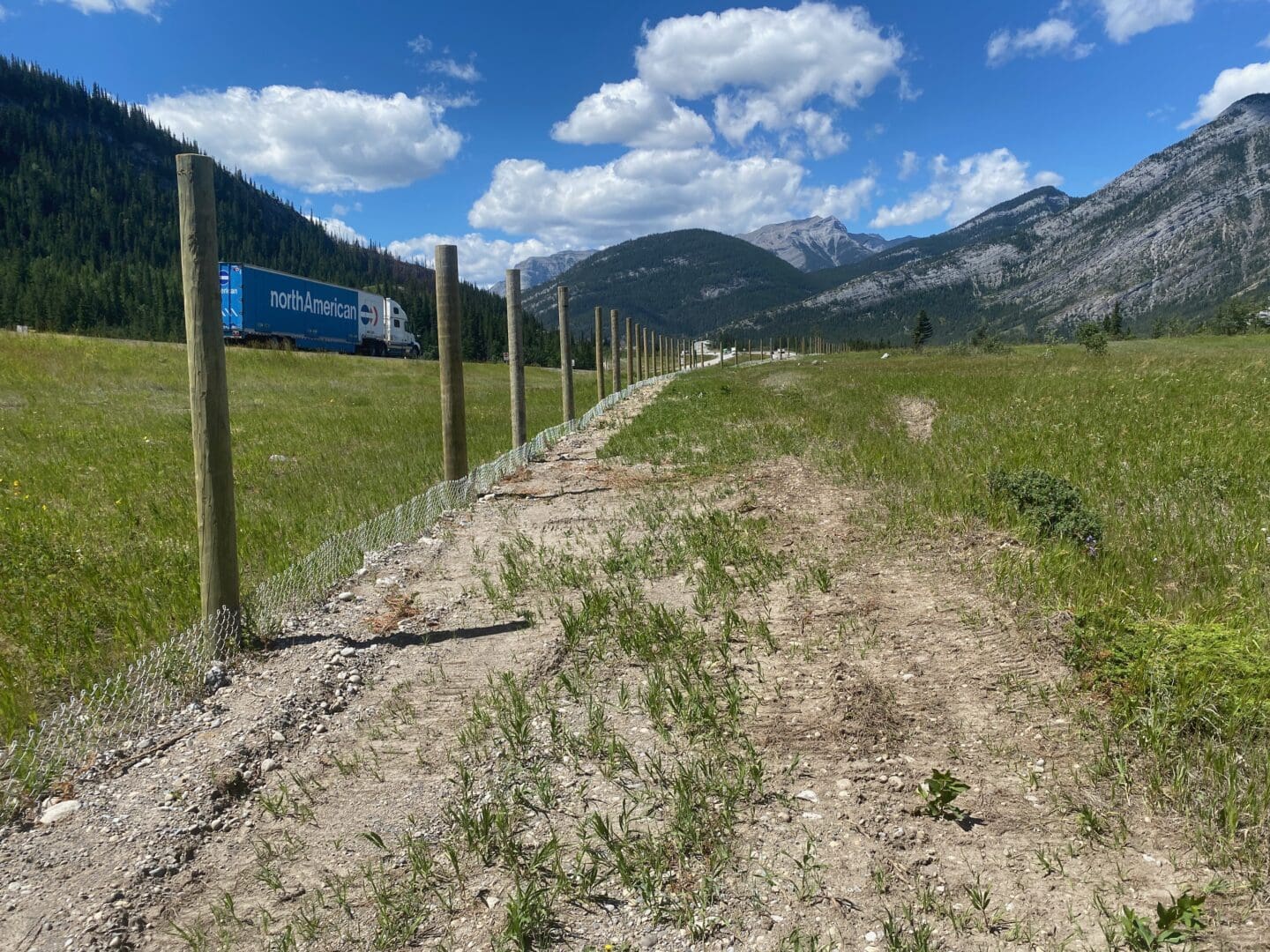
July 2022
Concrete is prepared and poured to become footings for arches.
Crews focus on building 12 kilometers of fencing and guiding barriers to ensure wildlife would be directed safely onto the overpass. Mesh is added to stop animals from digging underneath. Wildlife jump-outs allow animals to safely exit the highway corridor if they find themselves on the wrong side of the fence.
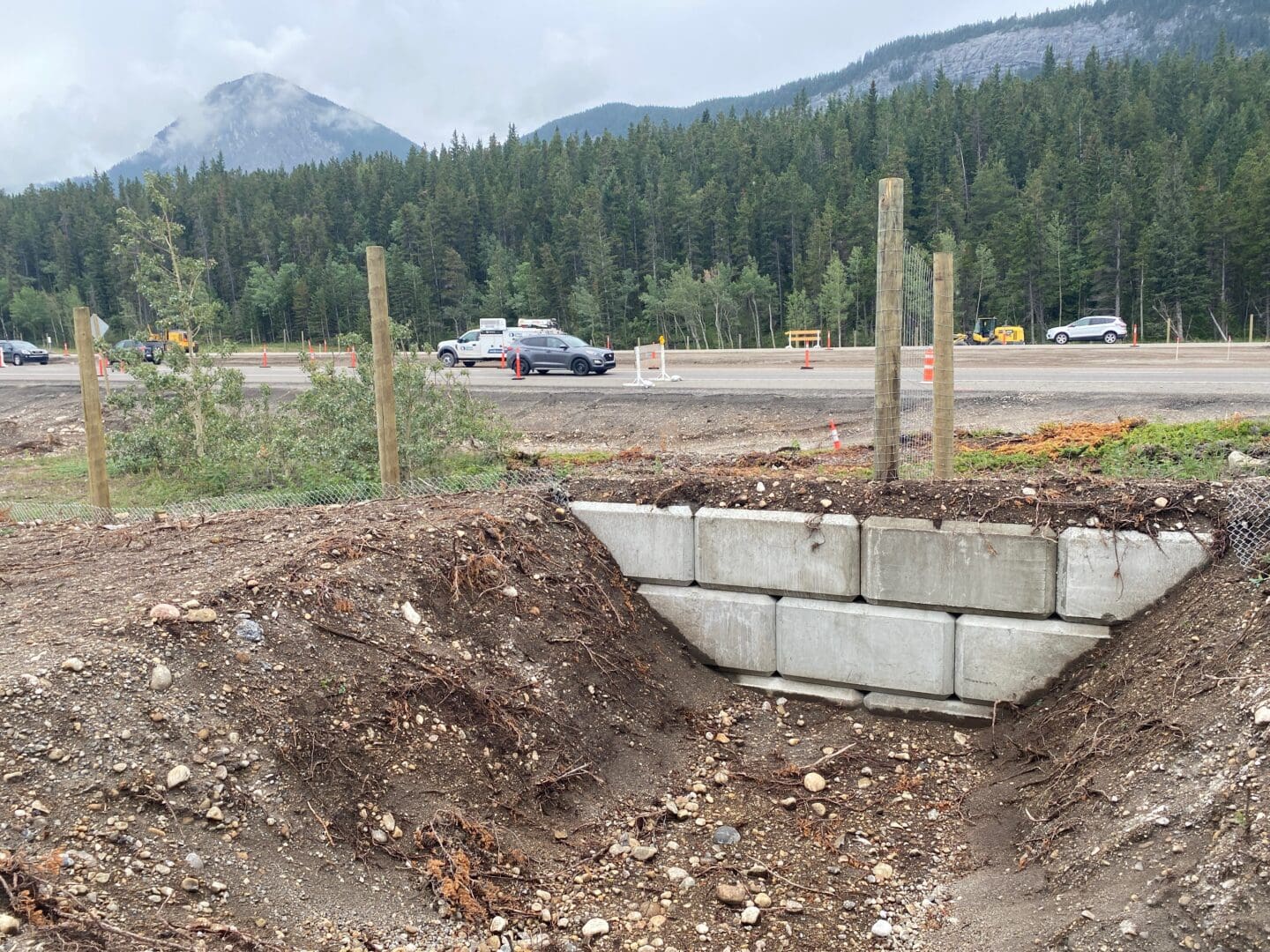
August 2022
As crews install foundational pillars, designed to support the arch soon to span the busy highway, fencing continues to be added for several kilometers alongside the highway, funneling wildlife to the crossing.
During the fall of 2022, the wildlife arches are manufactured and delivered to the site.
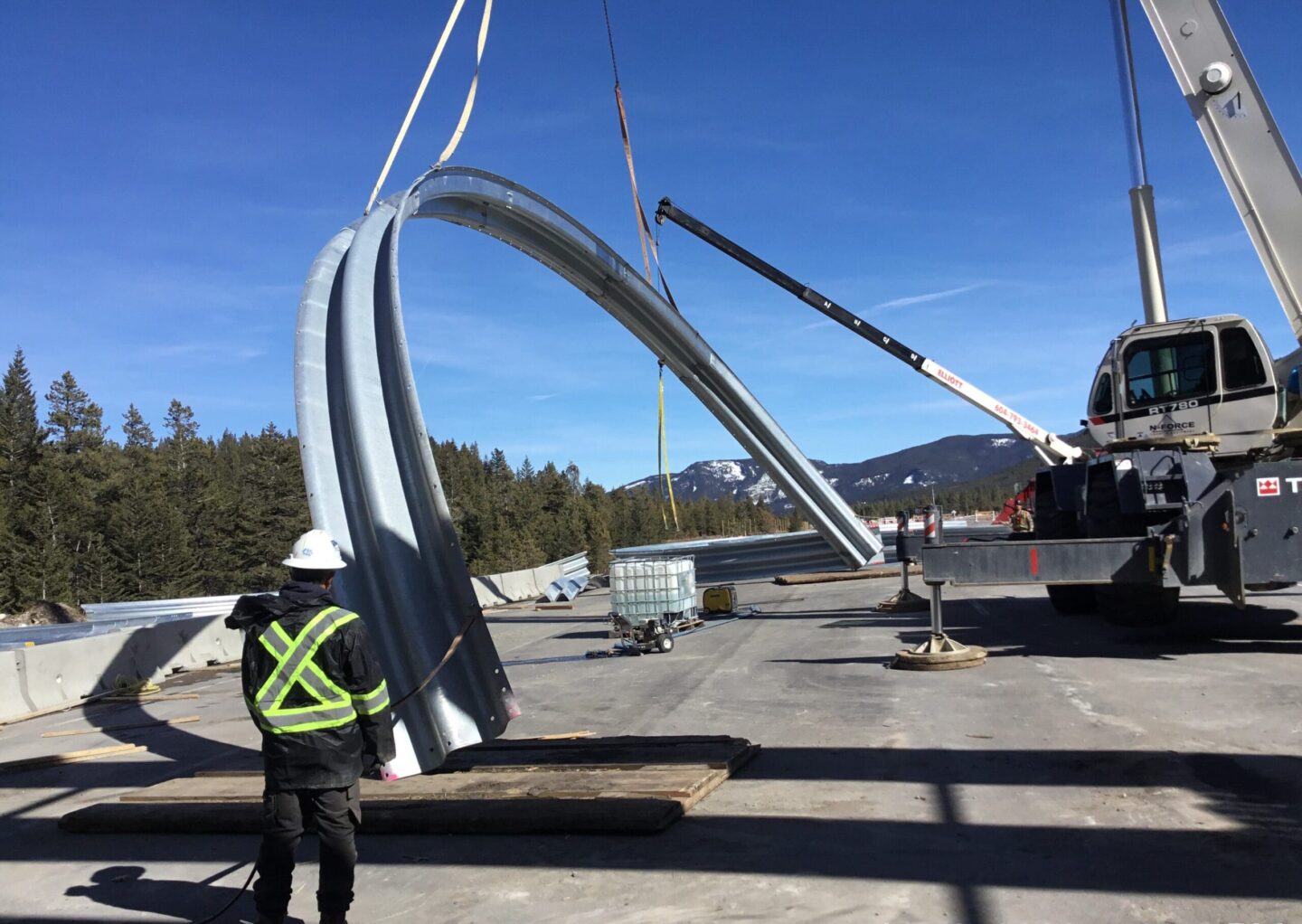
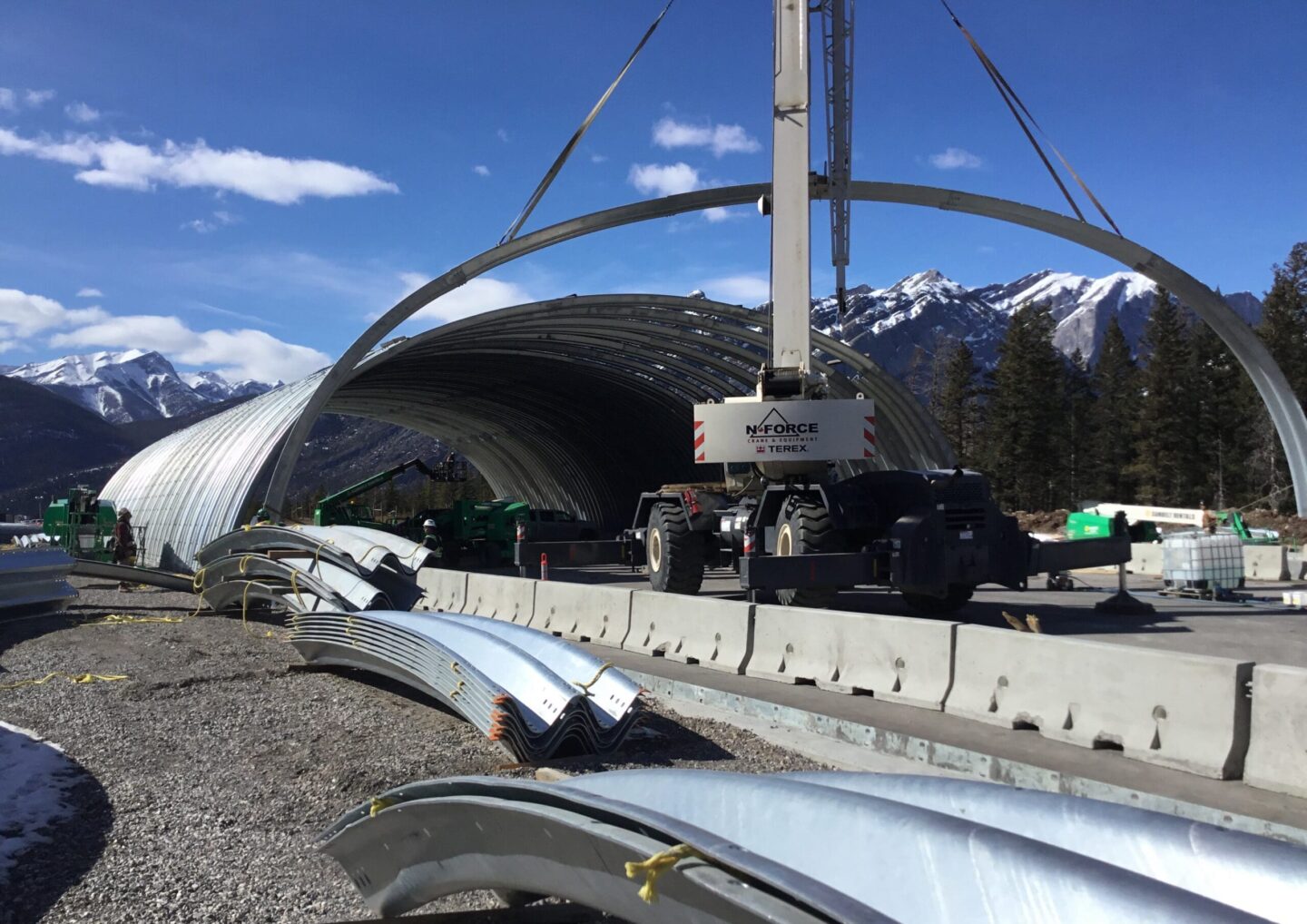
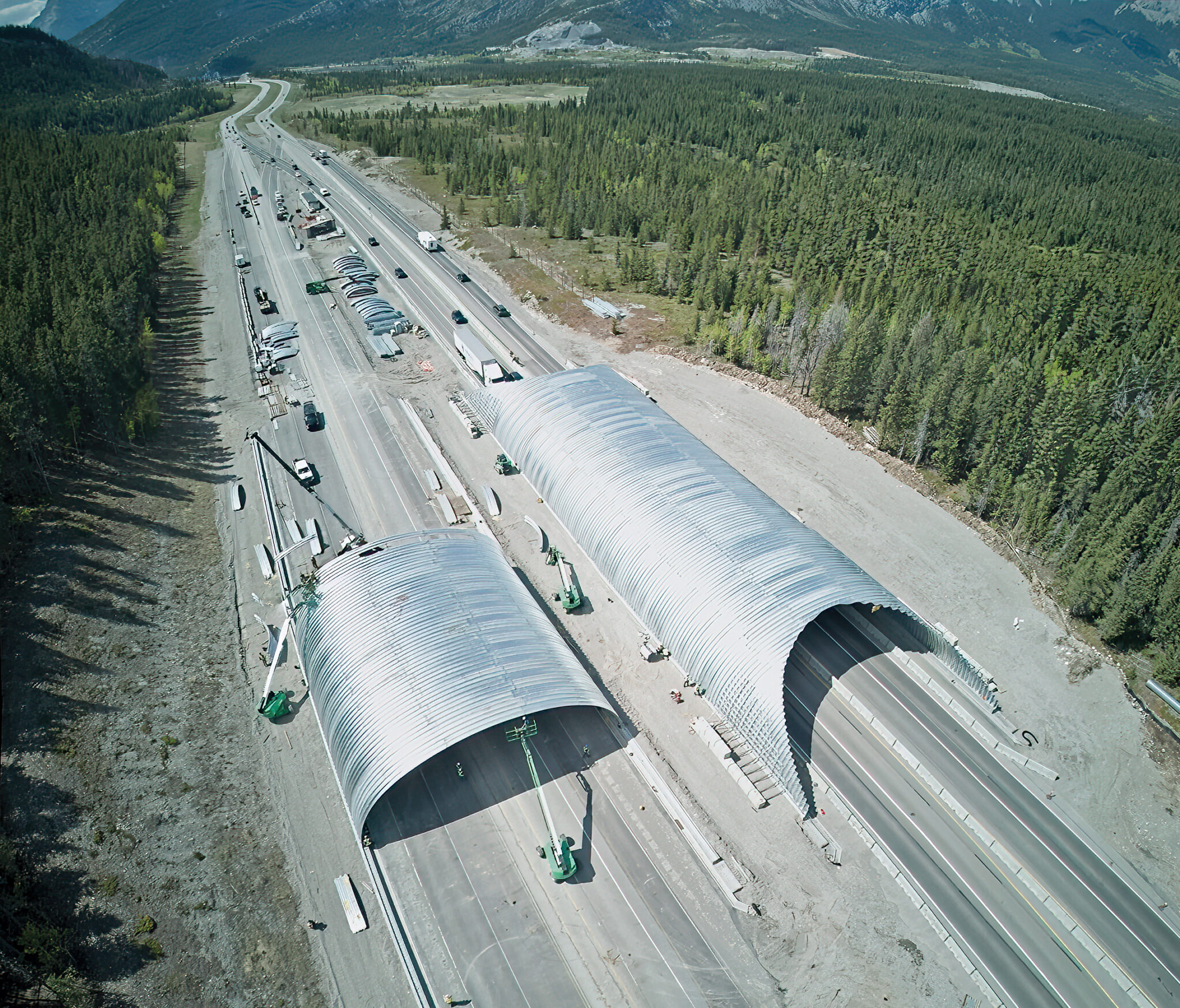
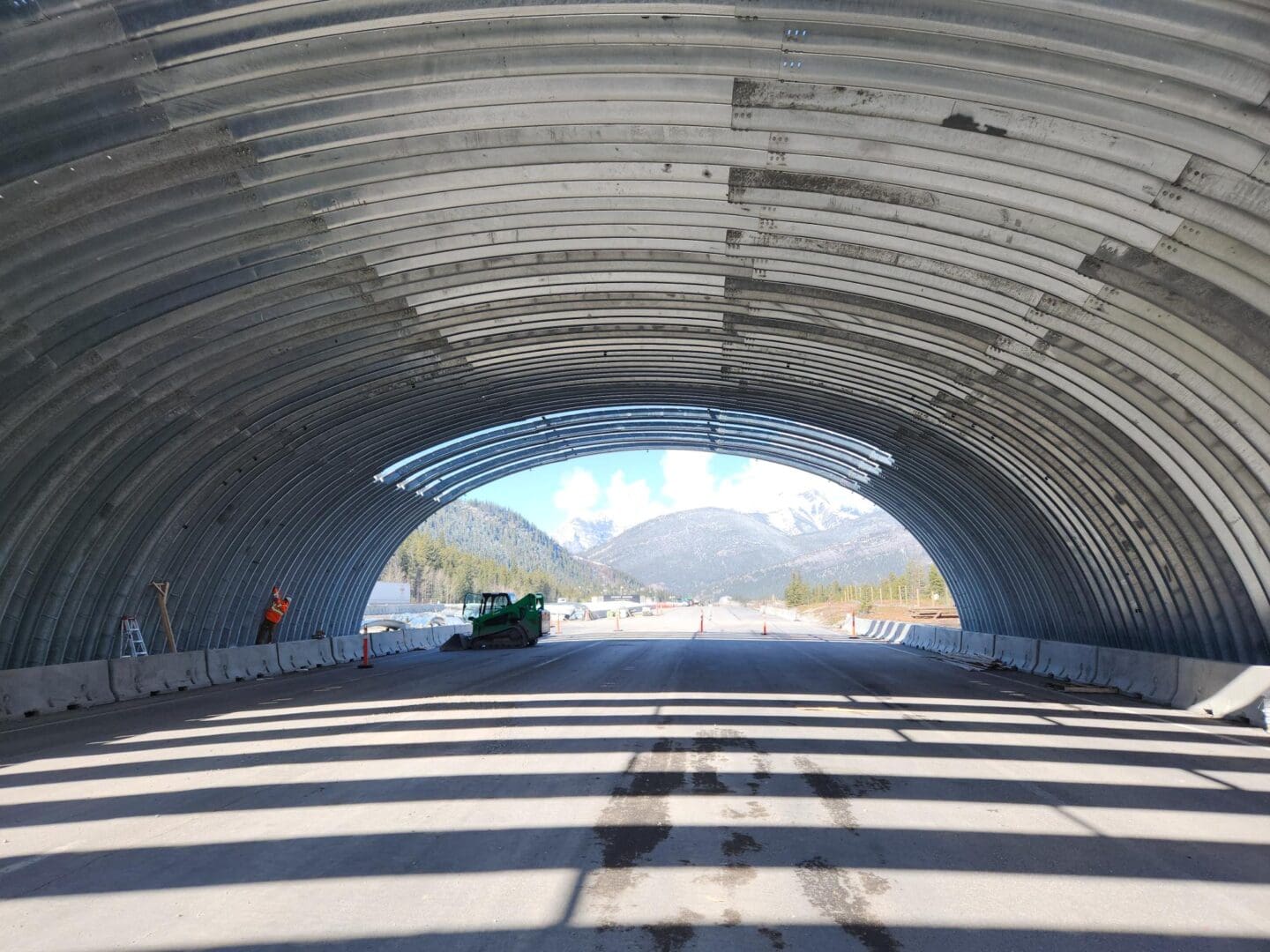
April 2023
The installation of twin, pre-fabricated 24-meter-long Ultra-Cor steel arches begins, forming the backbone of the overpass. Traffic is temporarily diverted on Highway 1 to allow this work to happen.
Plate assembly started on the westbound lanes at the end of March and finished at the end of April. Assembly for the eastbound lanes started in early May, finishing in June 2023.
These arches are designed to blend seamlessly with the natural landscape thanks, providing a gentle and welcoming path for wildlife. A unique beveled entry welcomes drivers below.
October-November 2023
The construction of the wildlife overpass progressed with earthworks and vegetation planting, and the completion of modified wildlife jumpouts and fence wire installation.
In November 2023, Tim Johnson, Y2Y’s landscape connectivity specialist, led a Canmore Youth Climate Summit visit to the overpass to talk about Y2Y’s work on crossings and wildlife connectivity with students from Alberta and British Columbia.
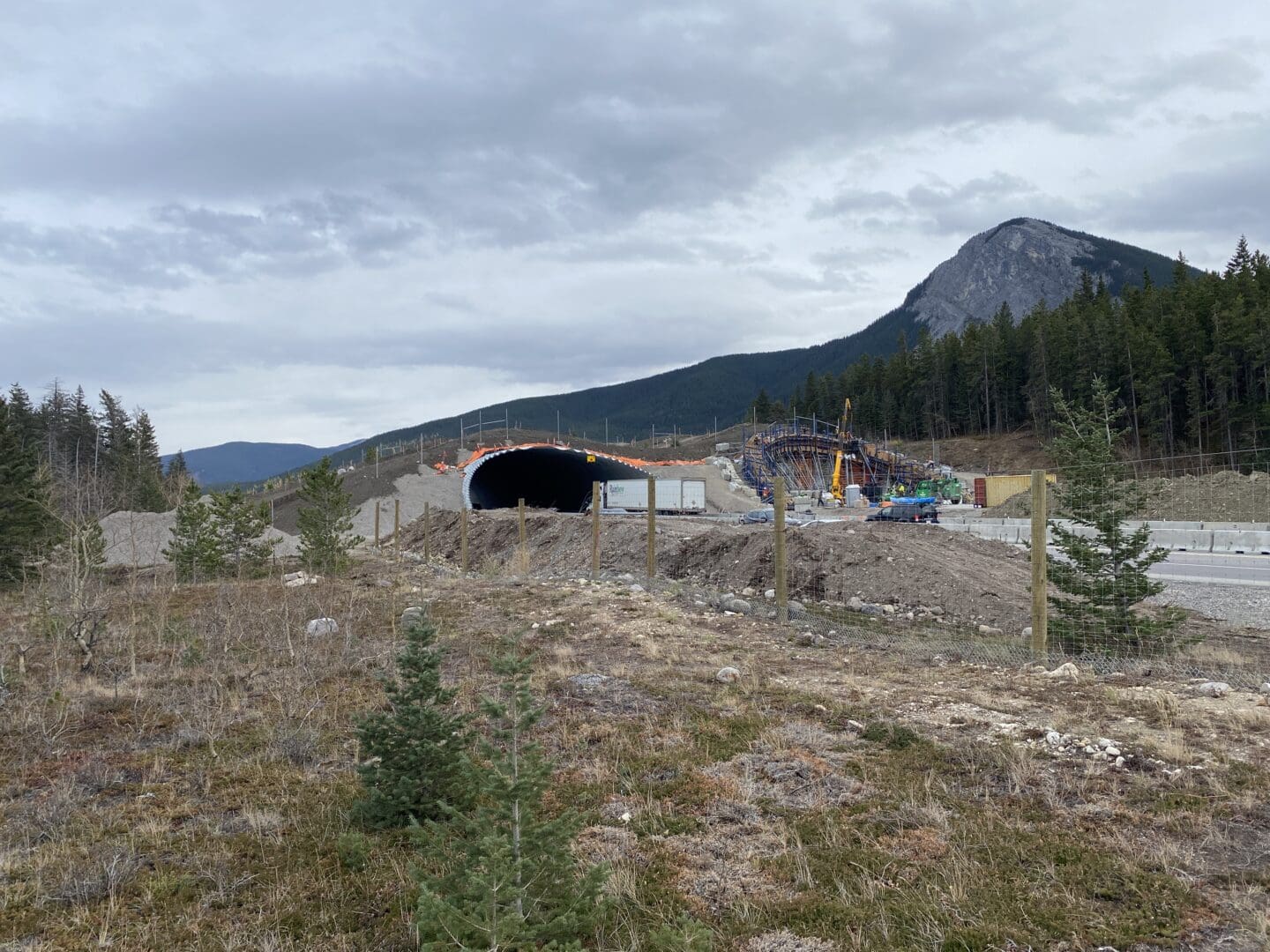
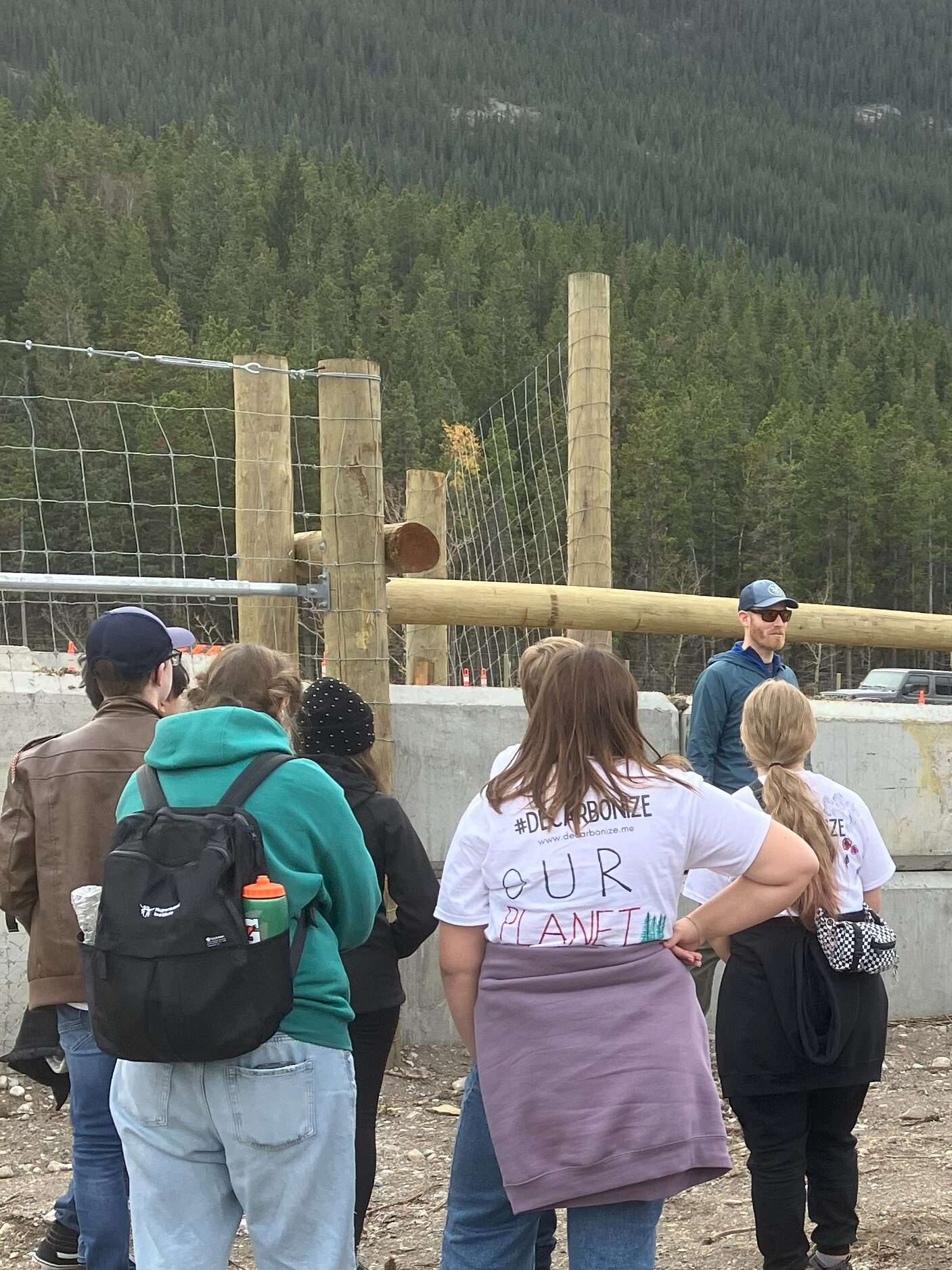
Photos: Tim Johnson
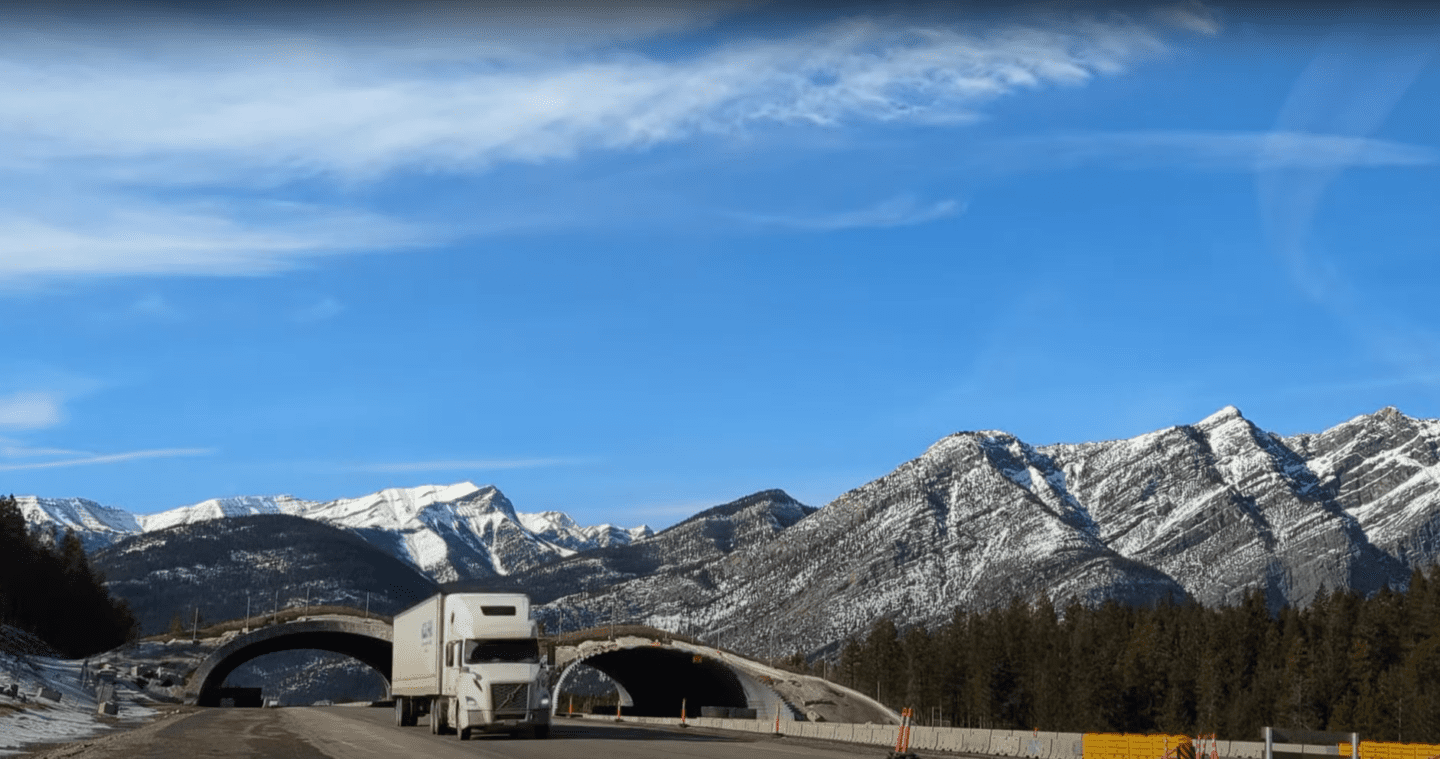
February 2024
Traffic now flows underneath the crossing as the arches are up and both lanes of traffic return to normal.
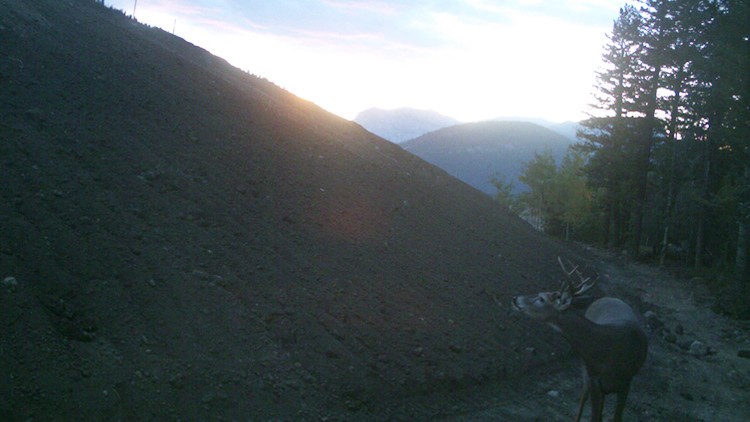
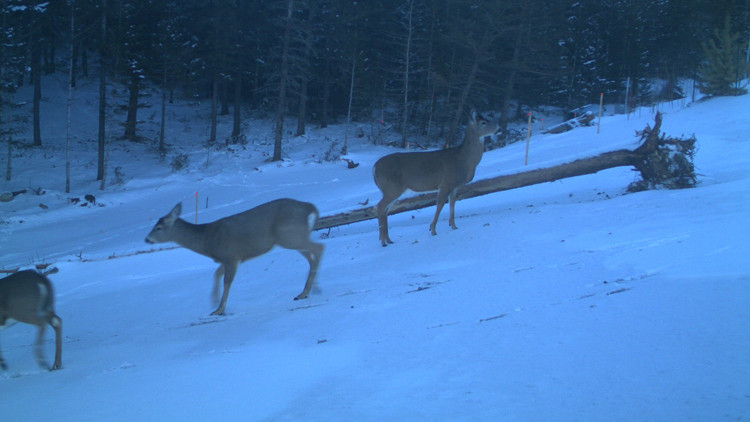
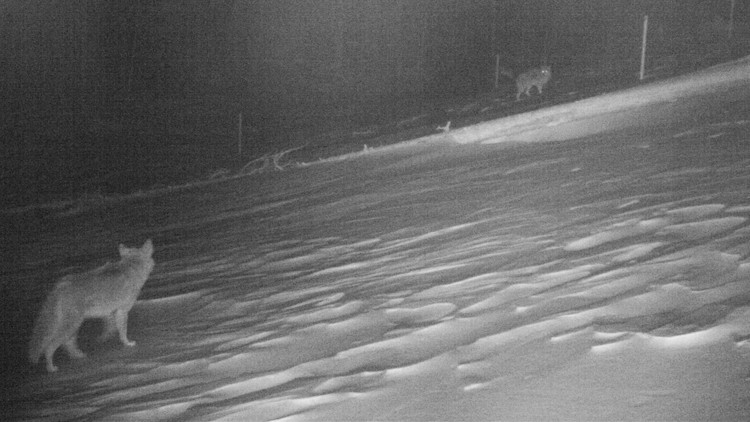
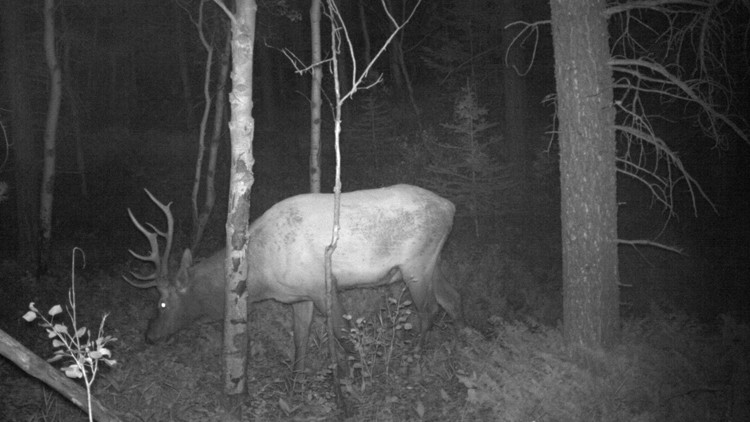
Winter 2023/2024
Delays in construction meant the overpass was a bit behind schedule, but the wildlife couldn’t wait.
The first signs of success appear as local wildlife begin to use the overpass. Initial footage showed a variety of species, from deer to cougars as well as smaller mammals, making their way across the structure, signaling a positive response to this new pathway. These documented crossings provide valuable data for conservationists.
Projects like this pay for themselves over time thanks to saved costs in emergency response, insurance claims, property damage and injuries.
Monitoring will continue, but wildlife crossings and fencing in nearby Banff National Park have reduced the number of wildlife-vehicle collisions by as much as 95 percent, so we remain hopeful that results will be similar for this overpass.
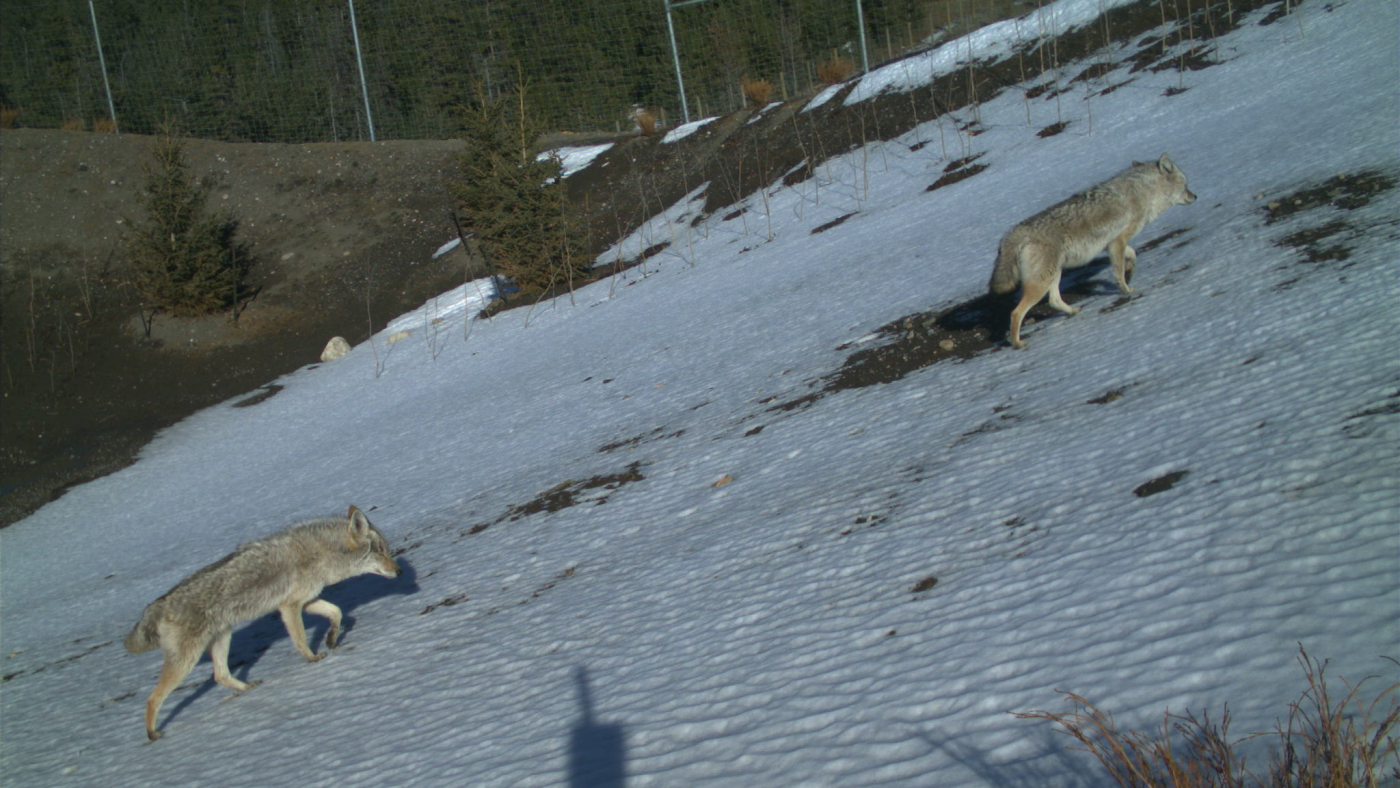
Spring 2024
In the final stages of construction, crews continue to landscape the overpass. Native vegetation has been planted, creating a familiar and enticing environment for animals.
Special care was taken to replicate the natural surroundings, with spruce trees, lodgepole pines, and aspens mixed with grassy areas with logs and boulders and smaller shrubs providing cover for the smaller animals using the crossing.
As of June 2025, The Honourable Peter Lougheed Wildlife Overpass (also known as the Stoney Nakoda Exshaw Wildlife Arch and Bow Valley Gap Wildlife Overpass) is now open.
This crossing stands as a beacon of hope for wildlife conservation in the Rocky Mountains and beyond. This gallery shows the transformation from the start of an idea to a fully functional wildlife corridor, highlighting the collaborative effort of numerous stakeholders committed to protecting Alberta’s wildlife and wild places.
This overpass, the latest of the more than 177 in the Yellowstone to Yukon region, sets a precedent for future wildlife conservation projects worldwide. And there are more to come!
In June 2024 Alberta’s Ministry of Transportation and Economic Corridors announced several new crossings on Highway 3, including a new underpass breaking ground in 2024 and three new wildlife overpass projects in the design phase. Plans for three new crossings, including an overpass, have also been revealed for Highway 1A between Calgary and Canmore. This is phenomenal news.
By providing a safe passage for animals and reducing vehicle collisions, the Bow Valley Gap wildlife overpass ensures that both people and nature can thrive and share this important landscape.
